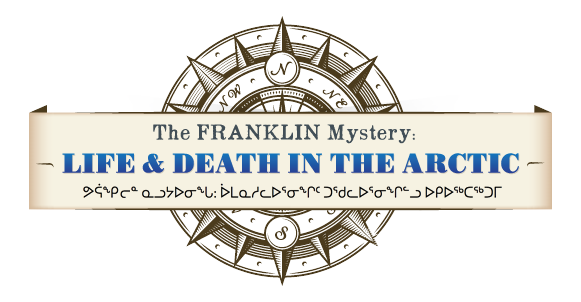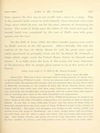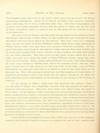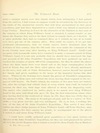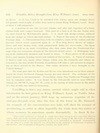Hall's Summary Letter to Grinnell (1869)
Repulse Bay, June 20, 1869.
DEAR SIR: This day I have returned from a sledge journey of ninety days to and from King William's Land. It was my purpose (and every preparation was made) to make this journey last season; but my attention then having been called to Mellville [sic] Peninsula, in the vicinity of Fury and Hecla Straits, where native report had it that white men had been seen, I directed my expedition there by way Am-i-toke, the Oo-glit Isles, and Ig-loo-lik, with the ardent hope and expectation of rescuing alive some of Sir John Franklin's last companions.
The result of my sledge journey to King William's Land may be summed up thus: None of Sir John Franklin's companions ever reached or died on Montreal Island. It was late in July, 1848, that Crozier and his party of about forty or forty-five passed down the west coast of King William's Land in the vicinity of Cape Herschel. The party was dragging two sledges on the sea-ice, which was nearly in its last stage of dissolution: one a large sledge laden with an awning-covered boat, and the other a small one laden with provisions and camp material. Just before Crozier and party arrived at Cape Herschel, they were met by four families of natives, and both parties went into camp near each other.
Two Eskimo men, who were of the native party, gave me much sad but deeply interesting, information. Some of it stirred my heart with sadness, intermingled with rage, for it was a confession that they, with their companions, did secretly and hastily abandon Crozier and his party to suffer and die for need of fresh provisions, when in truth it was in the power of the natives to save every man alive.
The next trace of Crozier and his party is to be found in the skeleton which McClintock discovered a little below, to the southward and eastward of Cape Herschel; this was never found by the natives. The next trace is a camping-place on the sea-shore of King William's Land, about three miles eastward of Pfeffer River, where two men died and received Christian (?) burial. At this place fish-bones were found by the natives, which showed them that Crozier and his party had caught while there a species of fish excellent for food, with which the sea there abounds. The next trace of this party occurs about five or six miles eastward, on a long, low point of King William's Land, where one man died and was buried. Then, about south-southeast two and a half miles further, the next trace occurs on Todd's Islet, where the remains of five men lie. The next certain trace of this party is on the west side of the islet, west of Point Richardson, on some low land that is an island or part of the main land, as the tide may be. Here the awning-covered boat and the remains of about thirty or thirty-five of Crozier's party were found by the native Poo-yet-ta, of whom Sir John Ross has given a description in the account of his voyage in the Victory in 1829-'34.
In the spring of 1849, a large tent was found by the natives whom I saw, the floor of which was completely covered with the remains of white men. Close by were two graves. This tent was a little way inland from the head of Terror Bay. In the spring of 1861, when the snow was nearly all gone, an Eskimo party, conducted by a native well known throughout the northern regions, found two boats, with many skeletons in and about them. One of these boats had been previously found by McClintock; the other was found lying from a quarter to a half mile distant, and must have been completely entombed in snow at the time McClintock's parties were there, or they most assuredly would have seen it. In and about this boat, beside the skeletons alluded to, were found many relics, most of them similar in character to those McClintock has enumerated as having been found in the boat he discovered.
[ … ]
I could have readily gathered great quantities — a very great variety — of RELICS of Sir John Franklin's Expedition, for they are now possessed by natives all over the Arctic Regions that I visited or heard of — from Pond's Bay to Mackenzie River. As it was, I had to be satisfied with taking upon our sledges about 125 pounds total weight of relics from natives about King William's Land. Some of these I will enumerate:
1. A portion of one side (several planks and ribs fast together) of a boat, clinker-built and copper-fastened. This part of a boat is of the one found near the boat found by McClintock's party.
2. A small oak sledge-runner, reduced from the sledge on which the boat rested.
3. Part of the mast of the Northwest Passage ship.
4. Chronometer-box, with its number, name of the maker, and the Queen's broad arrow engraved upon it.
5. Two long heavy sheets of copper, three and four inches wide, with countersunk holes for screw-nails. On these sheets, as well as on most everything else that came from the Northwest Passage ship, are numerous stamps of the Queen's broad arrow.
6. Mahogany writing-desk, elaborately finished and bound in brass.
7. Many pieces of silver-plate, forks, and spoons, bearing crests and initials of the owners.
8. Parts of watches.
9. Knives and very many other things which you, Mr. Grinnell, and others interested in the fate of the Franklin Expedition will take a sad interest in inspecting on their arrival in the States. One entire skeleton I have brought to the United States.*
The same year that the Erebus and Terror were abandoned one of them consummated the Great Northwest Passage, having five men aboard. The evidence of the exact number is circumstantial. Everything about this Northwest Passage ship was in complete order. It was found by the Ook-joo-lik natives near O'Reilly Island, lat. 68° 30' N., long. 99° W., early in the spring of 1849, frozen in the midst of a floe of only one winter's formation.
* After much hesitancy as though he might have done wrong in this, some time after his return, Hall placed the carefully-preserved remains in the charge of Mr. Brevoort, of Brooklyn, who transferred them to Admiral Inglefield, R.N., to be forwarded to England. Subsequently (by the plug of a tooth) the skeleton was identified as the remains of Lieutenant Vesconte, of the Erebus. (See Geographical Magazine, London, for April, 1878.)

